When traveling to the eastern coast of Mexico there is a destination that will be at the top of many best-of lists. Chichén Itzá is one of the new wonders of the world, spans 740 acres, and contains multiple scientific anomalies. These ruins date back to 400 AD, so if you’re interested in history, architecture, or cultural sites, then you won’t want to miss this one!
What is Chichen Itza?
Chichén Itzá is a Maya archeological site on Mexico’s Yucatan Peninsula, featuring a large pyramid called El Castillo. It is considered one of the most important cities in pre-Hispanic America. In addition to El Castillo, the site features other important Maya ruins such as the Observatory (El Caracol), The Temple of The Warriors, and the Maya Ball Game. New7Wonders named Chichen Itza as one of its 7 wonders of the world in 2001.
History of Chichen Itza
Chichen Itza was founded by the Maya people between 400 and 500 AD. It arose as a political power in the 10th century and was conquered sometime in the 13th century by another Maya ruler of the nearby city Mayapan.
There are 4 nearby cenotes (sinkholes that fill with groundwater and rain) that make the location ideal as there is always water nearby. This made the site ideal for settlement.
One of the things that fascinates so many people about the Maya people is that the advanced civilization they built in Chichen Itza and other nearby Maya cities rapidly declined and disappeared sometime in the 1400s. The reason for this is still unknown. When the Spanish arrived in the 1500’s they were met with little resistance and easily conquered the city.
What does Chichen Itza Mean?
Chichen Itza translates to “At the mouth of the well of the Itza” in Mayan. Itza translates to “water sorcerer” and refers to the Itzá people who originally founded the city.
Chichen Itza Sites
Chichen Itza is divided into two sections: Old Chichen and Chichen Itza. There are 26 Maya ruins across both sections. Some of the most famous sites include:
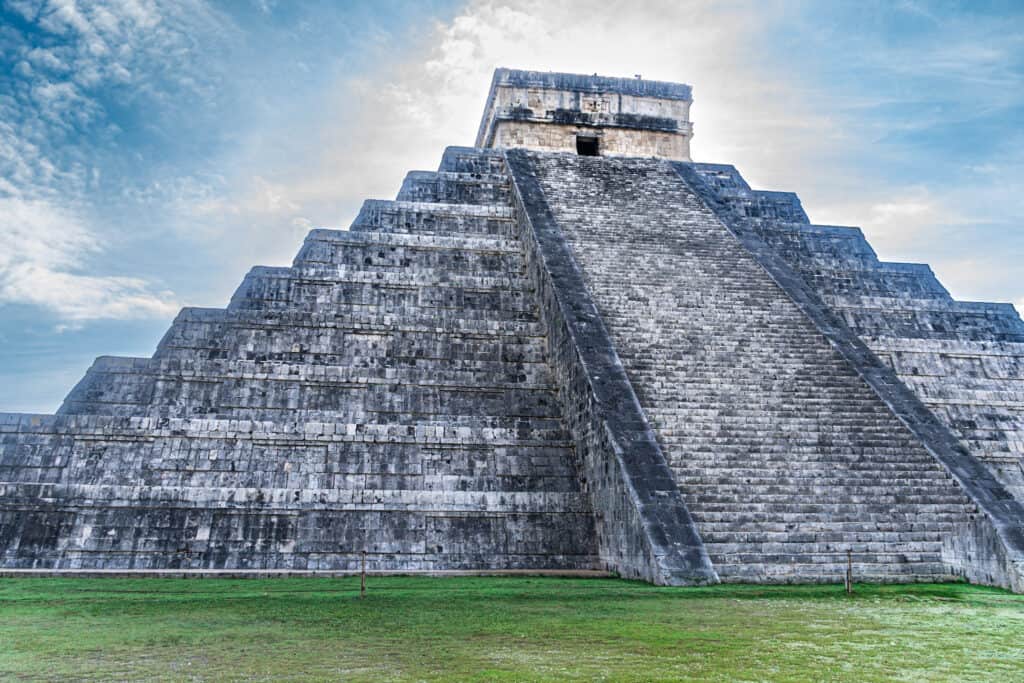
El Castillo
It’s hard to miss the iconic pyramid: El Castillo. It’s located near the main entrance to Chichen Itza and is 30 meters high. You pretty much walk right into it! El Castillo – sometimes called the Temple of Kukulkan – was built to honor the god Kukulkan, a Yucatec Maya feathered serpent deity.
This four-sided pyramid is more than just big: it’s scientific! The structure has a total of 365 steps, the number of days in a solar year. The temple was specifically positioned so that on the spring and autumn equinox the setting sun casts a shadow on the pyramid creating the illusion of the serpent god Kukulkan crawling down the pyramid. While we don’t know for sure that this was intentional, it’s hard to imagine that it wasn’t! Because of this astronomical pattern, Chichen Itza is very popular on the equinox both for tourists and the Maya people.
There’s also a special acoustical phenomenon when clapping in the right spot near El Castillo. The clap results in an extra loud echo that sounds similar to the song of the quetzal bird, considered divine by the Maya people. You’ll probably need a tour guide to find the special spot, but if you’re on your own you might be able to witness a nearby tour make the sound! We saw several groups, and since the sound is quite loud, it was hard to miss!
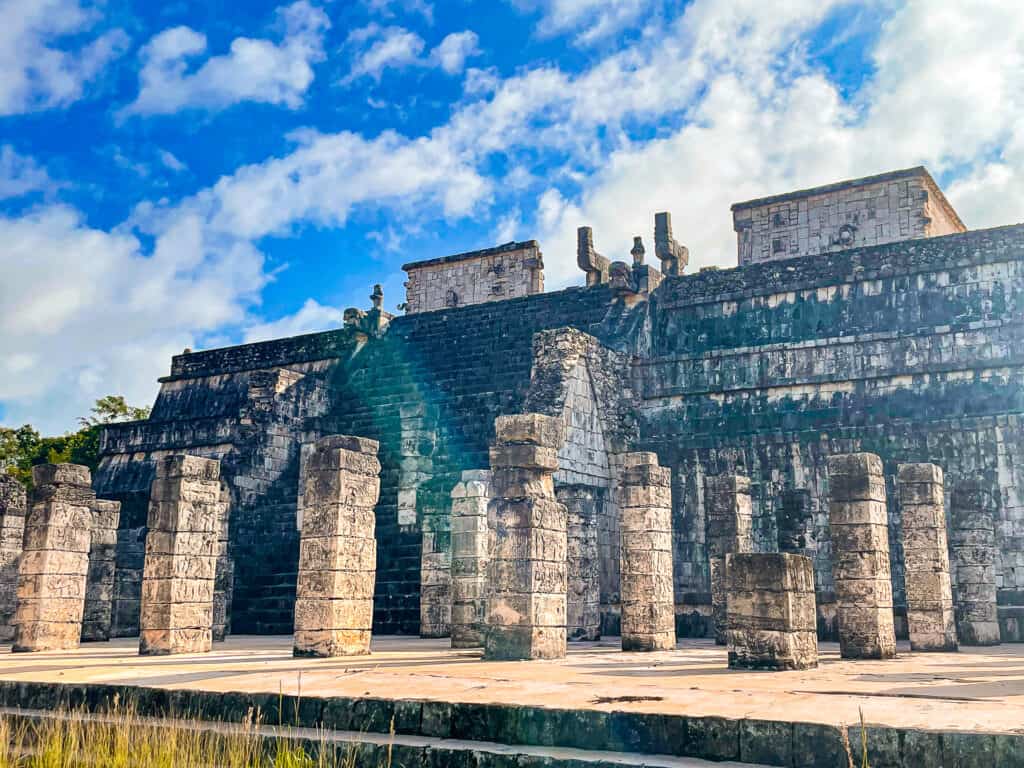
The Temple of the Warrior
Located just east of El Castillo, the Temple of the Warrior is a 40-meter tall pyramid-shaped template that is named after the carved columns nearby that depict warriors. While you can’t climb to the top, you’ll want to bring your glasses to see the Chac Mool statue at the top. Chac Mool are common figures in pre-Columbian Mesoamerican, and depict a reclining figure offering a bowl or plate to the gods. Two carved pillars depicting Kukulkan are just behind the Chac Mool.
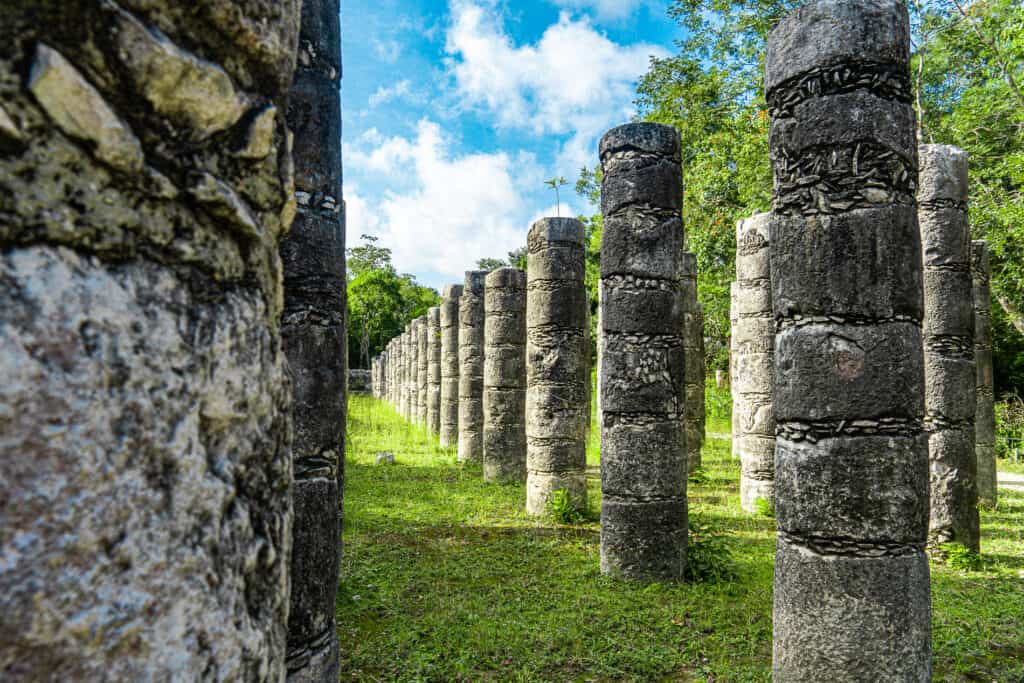
The Group of a Thousand Columns
Directly adjacent to the Temple of the Warrior is The Group of a Thousand Columns. This is a bit of a misnomer… there are really only about 200 columns. But when’s the last time you’ve seen 200 columns all lined up next to each other? Still pretty impressive! This area was thought to have been a market or other place of assembly.
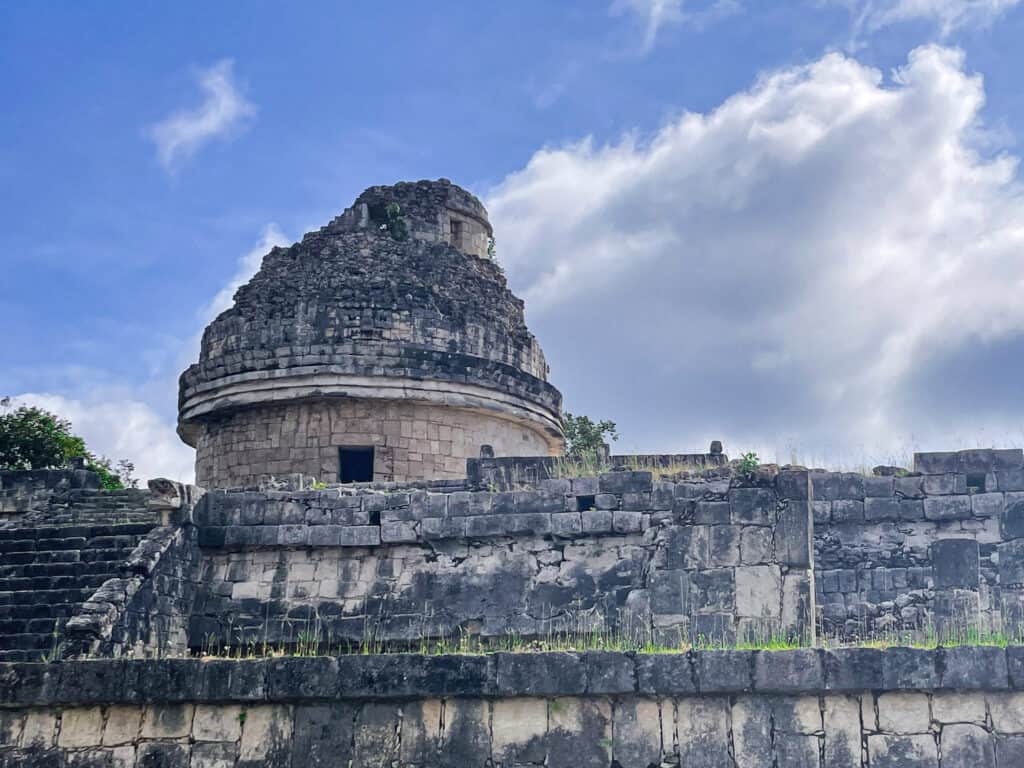
The Observatory (El Caracol)
This circular building is thought to have been an observatory. It is called El Caracol, or The Snail, because of its spiral staircase inside the ruins. The dome in the center towers above the surrounding trees so that Maya astronomers would have had a clear view of the skies. The windows in the observatory seem placed specifically to view the trajectory of Venus through the sky.
Tzompantli: The Wall of Skulls
The Wall of Skulls is a large platform whose face is covered in carvings of skulls. While gruesome, the carvings feel entirely relevant considering the purpose of the platform: it was the base for stakes on which decapitated heads would be impaled.
The Ball Court
If you’ve ever seen The Road to El Dorado, you’ll recognize the ball court from the movie’s Ulama scene. There are several ball courts throughout Chichen Itza where you’ll be able to see the serpent carved stone rings that acted as a goal for the ancient Maya ballgame.
When to visit
Chichen Itza is one of the most visited archeological sites in the world and can be quite touristy. It is open every day from 8am to 5pm, with the last access at 4pm. Like all good tourist sites, it’s best to visit on a weekday first thing in the morning. Tour buses start rolling in around 10am-11am, so it’s best to show up early to avoid the crowds! Expect to spend 2-4 hours exploring the full site.
It will most likely be very warm throughout the day; to avoid the intense heat, start your visit at 8am. While the weather is usually warm, it can sometimes be rainy in the late spring and early fall. If you’re visiting during that time bring an umbrella or a light rain jacket; the rain should pass quickly!
Not a Morning Person?
If you’re not a morning person, you might consider arriving at the ruins around 3pm. This is the time that most tours are finishing up. That leaves you with 2 hours until closing to explore with fewer crowds. However, expect high heat!
As previously mentioned, the fall and spring equinox are popular times to visit Chichen Itza because of the snake shadow on El Castillo. Unless you really need to witness the show, it’s best to avoid these days as they will be very crowded. Other crowded days include weekends and Mexican holidays. It’s also best to avoid Sundays when the site is open to Mexican nationals for free.
Lastly, if you’re staying on the east coast of Mexico, remember that Cancun and Chichen Itza are in different time zones from October to April. Cancun is one hour ahead. Make sure to take this into account when planning your trip!
Chichen Itza Prices
In 2021, the entrance to Chichen Itza is $533 MXN (about $27 USD) for international visitors. That price is partially the entrance ticket, and partially a government fee. The two fees are paid at two different windows as you enter the archeological site.
While you can pay the entrance fee with a credit card, you must pay the government fee in cash. For ease, it’s best to just bring cash to cover the whole thing.
If you’re driving, you’ll also need an additional 30 pesos to pay for parking!
How to get to Chichen Itza
There are a few different ways to get to Chichen Itza: you can join a tour group with transportation, drive, or take a bus. The ruins are located about 200km from Cancun and 150km to Tulum. Use Google Maps to get the exact distance from your hotel, but expect your trip to take 2.5-3 hours.
Driving to Chichen Itza is easy, safe, and provides the most flexibility for your trip. There is plenty of parking available in an official lot at the site. make sure to park in the lot and not on the street. Parking costs about $2 (30 pesos). This is what we did when we visited and it was so easy!
If you’re interested in having a formal tour guide once you arrive at the ruins, taking a tour might be your best option. If you’re staying at a resort in Cancun/Playa del Carmen/Tulum, they should easily be able to arrange a tour to Chichen Itza for you. This will probably involve some sort of bus or shuttle van to the site. The biggest downside of this is that most tours will not get to the ruins at opening.
Lastly, there are public buses available from Cancun/Playa del Carmen/Tulum. There are options that arrive as early as opening, and leave at various times throughout the day. This will be a long bus ride, and is not as direct as driving yourself.
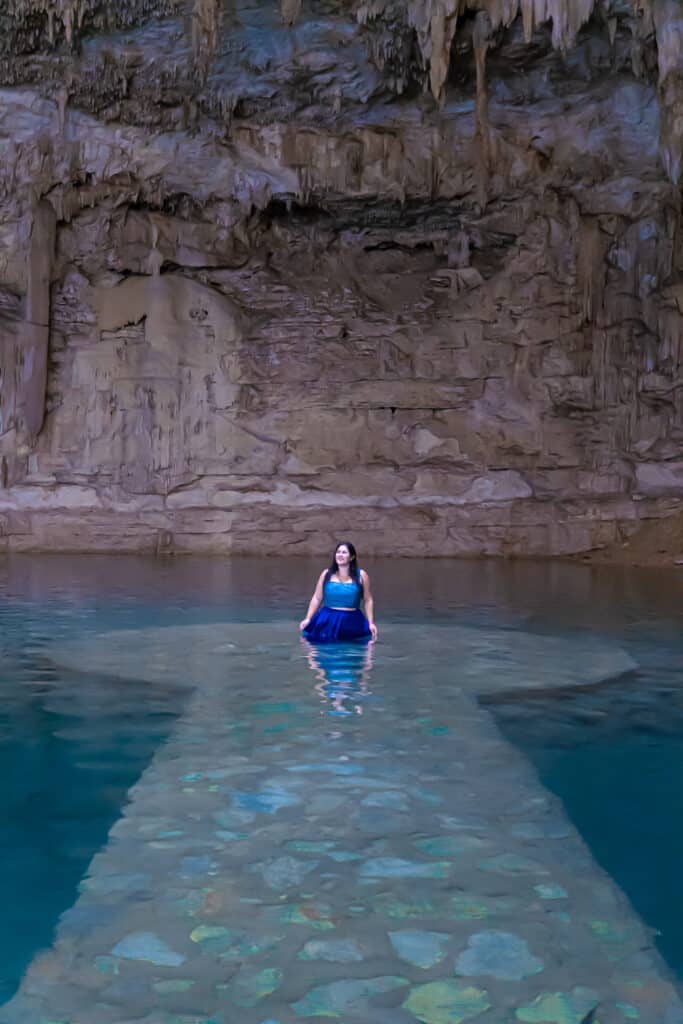
Cenotes near Chichen Itza
The location for the city of Chichen Itza was probably selected because of its close proximity to several cenotes. Cenotes are natural sinkholes that fill up with groundwater and rainwater to create a swimming hole. There are four cenotes at Chichen Itza including the Sacred Cenote. In addition, there are several famous cenotes nearby such as Cenote Ik Kil, Cenote Suytun, and Cenote Oxman. If you’re driving to the ruins, you can easily stop at one of these cenotes on your way back!
We stopped at Cenote Suytun on our drive back to Akumal. It was magical and I highly recommend a visit if you’re driving past!
What to bring
You don’t want to drive all the way out to Chichen Itza and realize you’ve forgotten something! Here is a quick list of things to make sure you have on hand:
- Cash: you will need to pay for part of your entrance fee in cash, along with parking. I suggest bring at least enough for tickets, and a bit more in case of emergency.
- A full stomach: Outside food is not allowed into Chichen Itza so make sure to leave your snacks behind. There are a couple of places to buy snacks just outside the entrance, but it’s a good idea to make sure you eat before going in.
- Water: It’s going to be hot, and you’re going to be walking around. While there is water for sale onsite, it’s over priced, so you you will want to bring your own!
- Good Shoes: You’ll be walking around so make sure you have good shoes.
- Hat/Sunscreen: Chichen Itza is out in the open, and it will most likely be very hot. Bring a hat or something to shade yourself from the sun. You can also wear sunscreen, but if you plan to swim later make sure it’s biodegradable! It’s better for the coral reefs and marine life.
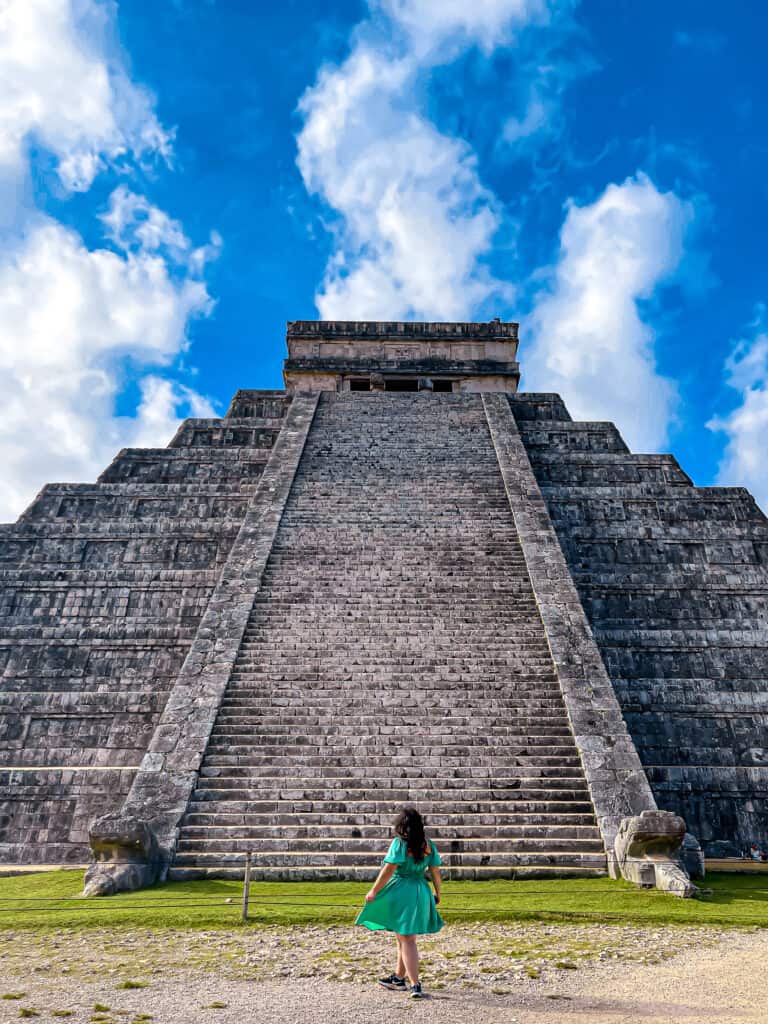
Chichen Itza FAQ
Where is Chichen Itza?
Chichen Itza is located in the Yucatan Peninsula in Mexico, 200km from Cancun and 150km to Tulum.
Who built Chichen Itza?
Chichen Itza was founded by the Maya people.
How old is Chichen Itza?
While we don’t know exactly when Chichen Itza was built, it is thought to have been founded sometime around 400 A.D.
How big is Chichen Itza?
Chichen Itza spans 740 acres and takes 2-4 hours to explore.
Can you climb the pyramid at Chichen Itza?
Due to its age and huge amount of people that visit the ruins every year, you are not allowed to climb any of the ruins at Chichen Itza. Please be respectful during your visit!
When is Chichen Itza open and how much does it cost?
You can visit Chichen Itza everyday from 8am – 5pm (last entrance at 4pm). It costs $533 MXN (about $27 USD) for international visitors to enter the site.
love it? pin it!




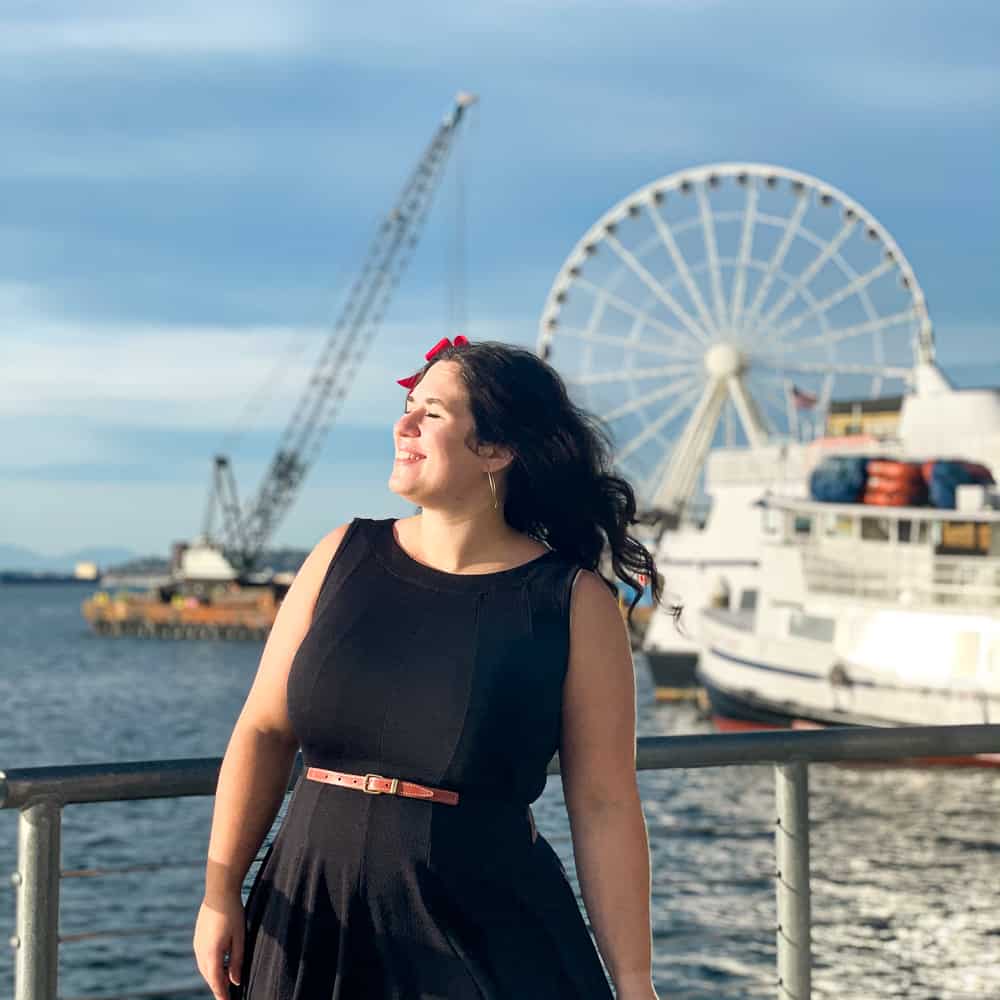
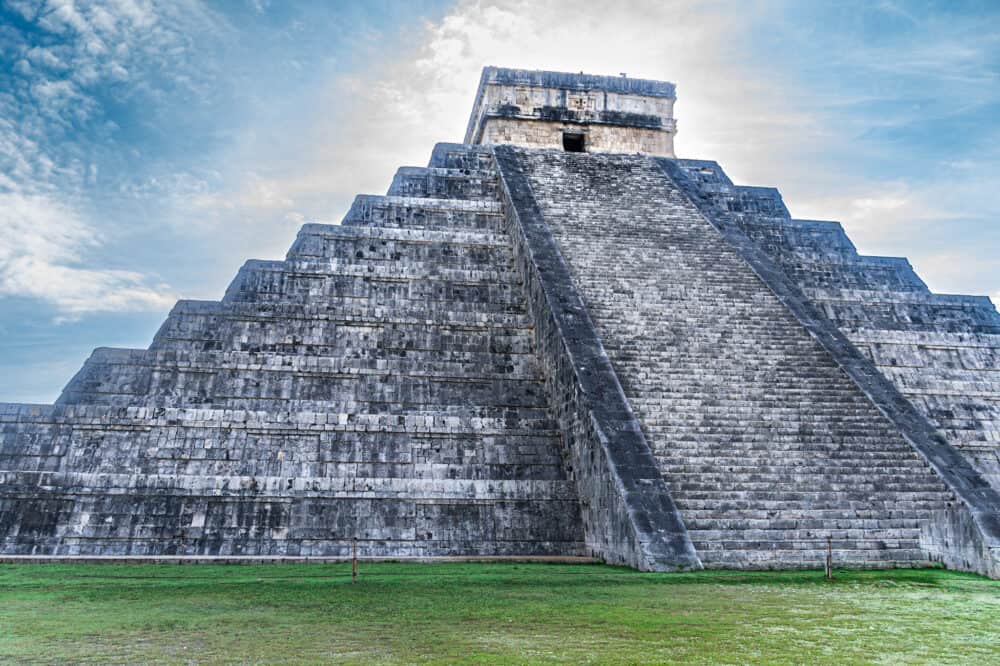
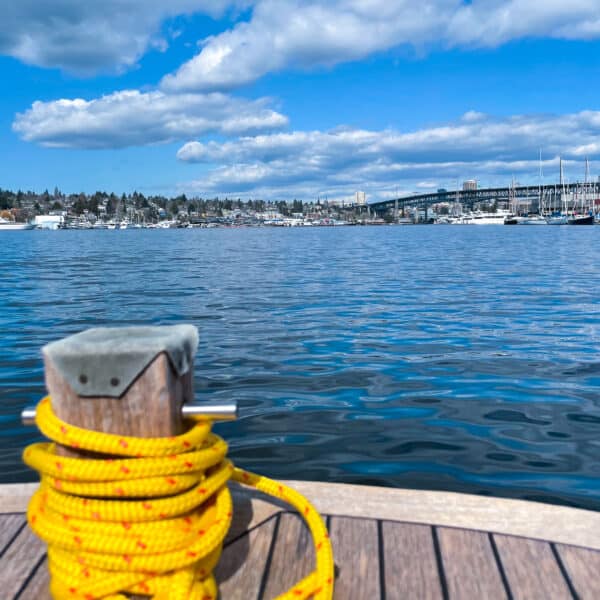
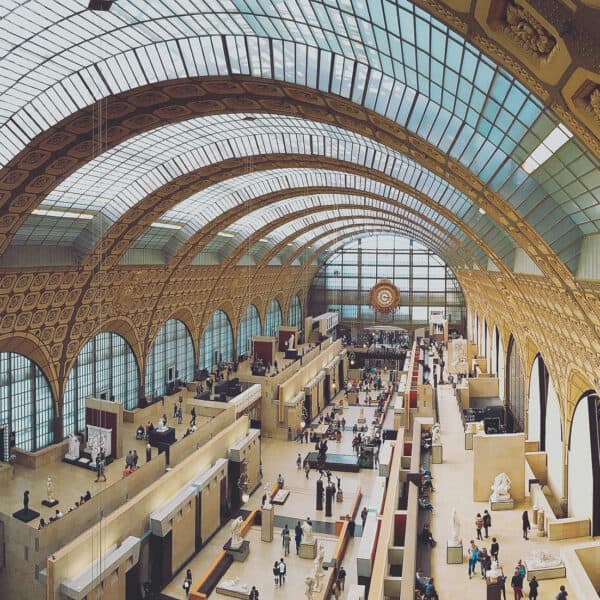
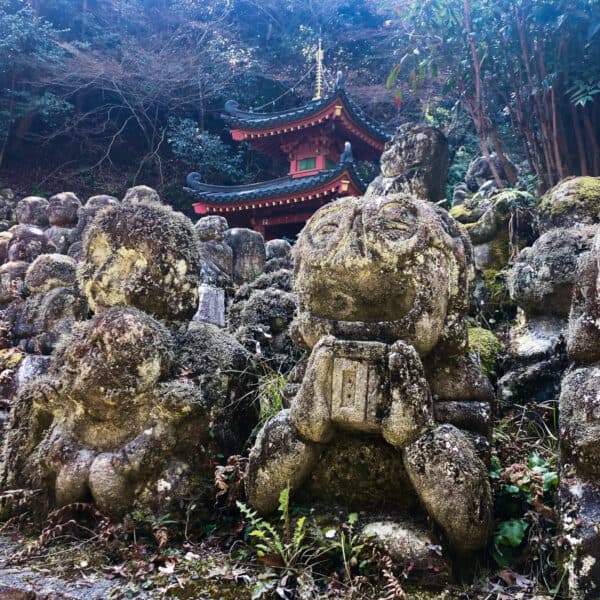
Leave a Reply